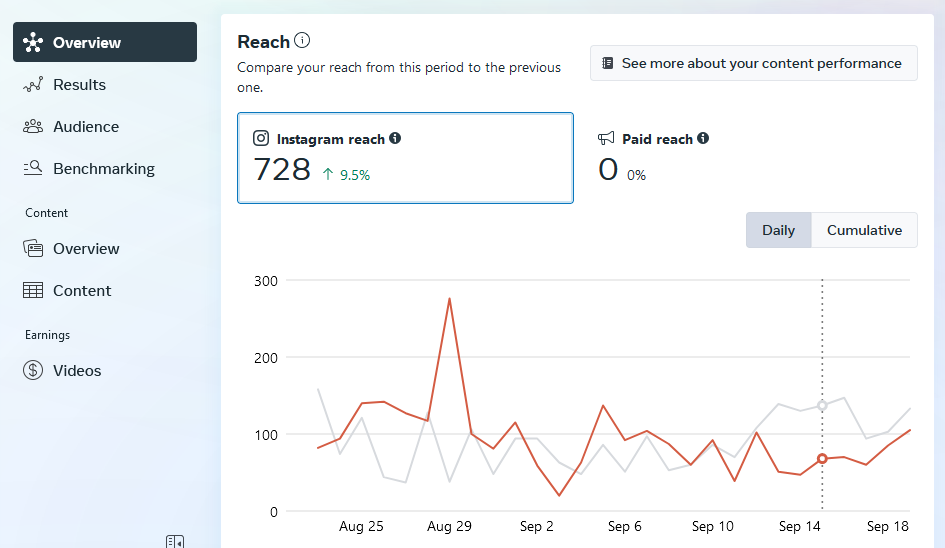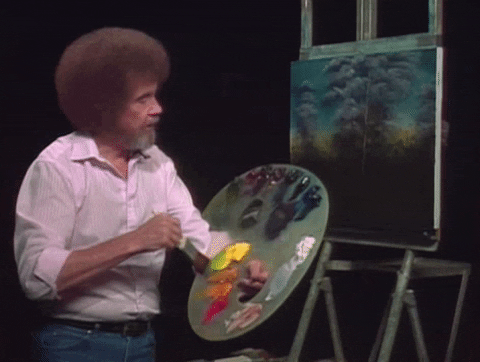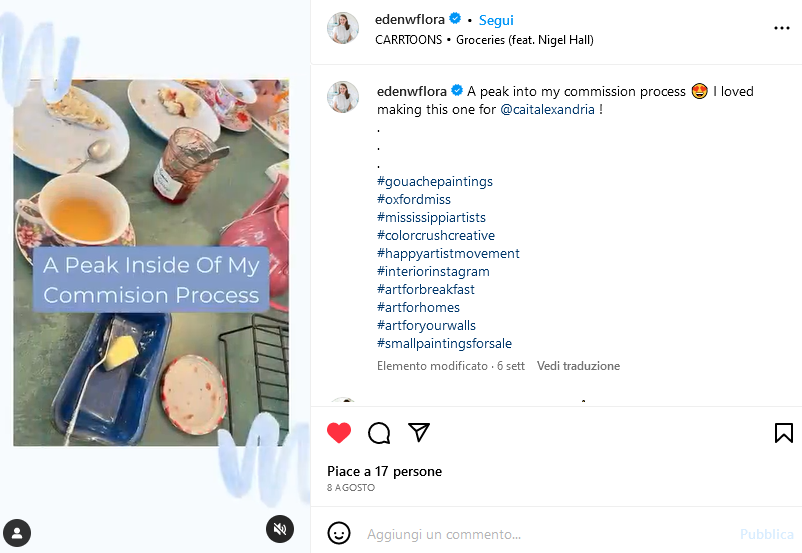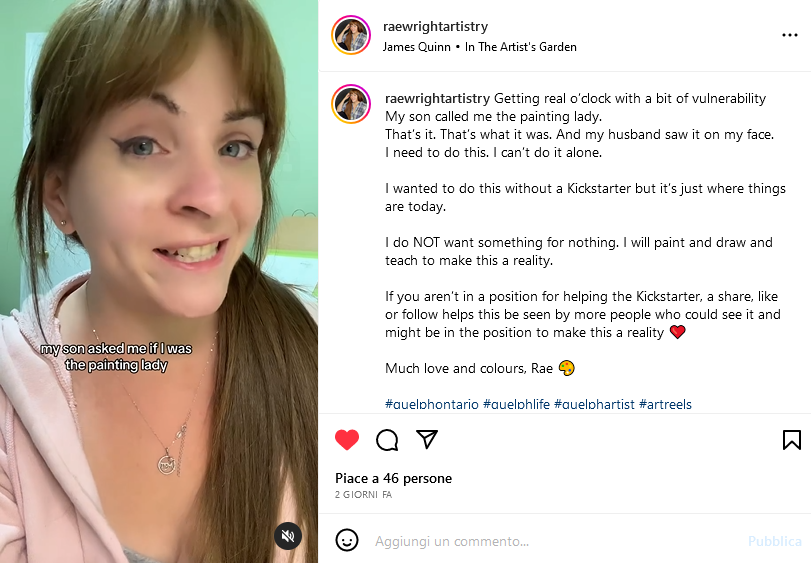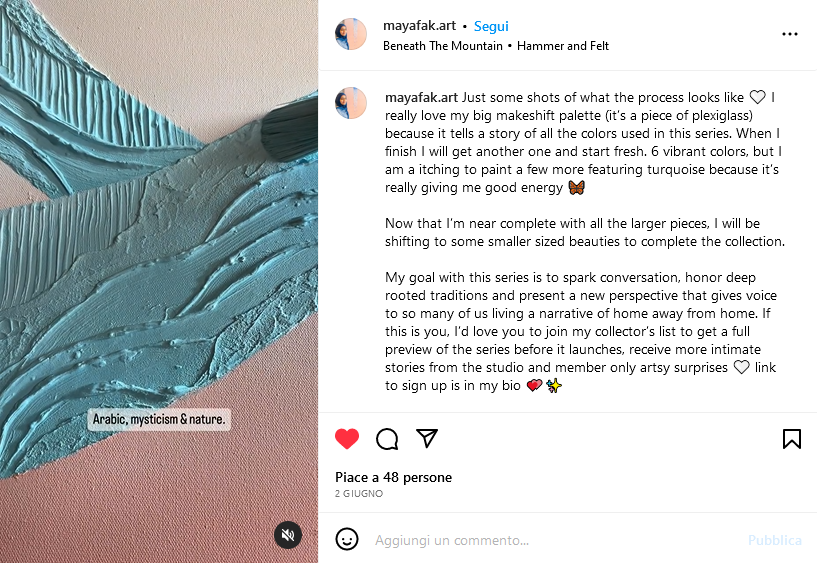Maximizing Art Sales: A Social Media Strategy for Artists
So, you're an artist on the rise, huh? 🧑🎨
You've got something to impart and a narrative to relate.
But are your artworks gathering more dust than likes and sales?
Wondering how social media can give your art the spotlight it deserves?
You're not alone in this quest - many artists grapple with these questions too!
Luckily, I’m here to unveil proven content marketing solutions to your struggle.
The secret sauce for a successful artistic career is crafting a killer social media plan that connects with people's hearts, sparks conversations, and paints your brand into their memory.
That’s where today’s post comes in to guide you through the core steps for a results-driven social media strategy for artists that:
Delivers engaging content targeted to your audience.
Maximizes your reach and reputation.
Boosts trust, loyalty, and brand longevity.
Streamlines your social media presence.
Grows an online community of staunch supporters.
Drives traffic to your website and generates ongoing art sales.
All while monitoring performance to keep improving!
If you’re feeling lost in the digital ocean, don't sweat it.
Once you've explored the seven tactics enclosed in this guide, you'll be sailing smoothly towards victory! 🏆
Let’s dive in.
Social Media Strategy for Artists - Table of Contents
Seven Proven Steps for an Effective Social Media Strategy for Artists
1. Maximize Your Social Media Reach
5. Foster a Sense of Community
FAQs - Social Media Strategy for Artists
Seven Proven Steps for an Effective Social Media Strategy for Artists
Growing a profitable art business takes time, grit, and consistency. No doubt.
But with a clear action plan and solid content system, you ease the process and get the most out of your marketing efforts!
78% of businesses wouldn’t claim that a well-documented content strategy is the key to their digital success otherwise.
The following steps will show you how to achieve the same positive outcome with a top-notch social media marketing strategy in place.
1. Maximize Your Social Media Reach
If you're hoping to expand your reach on the web, social media is a great place to begin.
BUT, just being on these platforms isn't enough - you need a strategic approach that optimizes every post and interaction.
Your aim?
To reach more potential art buyers while nurturing existing relationships with followers and expanding your social network.
Sounds simple, right?
Well, it will be with the methods below.
Gauge Your Current Standing
Before effectively boosting your online presence and engaging with your audience, it's crucial to understand where you currently stand.
Tools like Google Analytics or Sprout Social clarify how your actual social media endeavors are performing across different platforms, including your engagement rates, follower growth, and content performance.
The analytics features that are incorporated into social channels are helpful in this phase too.
My Instagram performance on Meta Business Suite.
Additionally, you need to take a comprehensive look at:
Your existing brand image: Your brand image is the perception of your creative enterprise in the minds of consumers. Assessing how well this aligns with the vision and values you want to convey is paramount - so, consider running surveys, live chats, focus groups, or other social media initiatives to gather people’s feedback about your brand.
Your social media profiles: Auditing all of your social media accounts (more in the following paragraphs) is pivotal to consistent branding. From profile pictures and bios to the tone of voice used in posts - everything should be cohesive and representative of who you are as an artist or arts organization.
Your content strategies: A customer-centric content strategy is key for increased audience engagement - review past social media posts (What worked? What didn't? Which pieces garnered more likes, shares, or comments?), assess your audience’s behavior, and use these insights as a foundation for future content planning.
Your overall digital footprint: Your digital footprint extends beyond social media; it includes any place online where information on you exists - your website, blog posts, and even search engine results pages (SERPs). A thorough review will help you identify areas needing improvement and successful aspects worth maintaining.
Setting the basics of a successful, well-planned social media strategy for artists is all about knowing where you are to map out the best route towards where you want to be!
2. Analyze Your Audience
Investigating your dream audience is another essential step for a compelling social media strategy for artists.
Skipping it would be like trying to paint a masterpiece without knowing what colors or brushes you have at your disposal.
You’d create sloppy content that sweeps away any chance of growing a fan base of real advocates and brand ambassadors!
To tackle this effectively:
Research demographics: The same way you study the subject before making the first brushstroke of your next art piece, understanding who makes up your online audience is fundamental. Use analytics tools, explore niche-related social media groups/forums, or run polls to get insights into age ranges, locations, and other demographic details of those interacting with your brand.
Dive into interests: To truly engage with your following and prospective customers, get curious about what interests them (Are there common passions? Favorite art influencers? Trending topics? Recurring questions?). The more nuanced knowledge you have about them, the easier it’ll be to create helpful, resonating content (a handy tool here is Facebook Audience Insights, which provides aggregated data around interests and behaviors based on selected criteria).
Capture behavior patterns: Determine when your audience is most active, their preferred platforms, content formats, and interaction types (Are they passive observers or eager participants?).
Study competitor engagement: Check out what other art brands are up to online, what content gets them the most attention, and how their following responds (you might learn valuable info from that and reuse some of your competitors’ best content ideas in your social media network!).
Remember, knowing your audience is not a one-time event; it's an ongoing process of learning and adapting as you grow with them.
3. Create Engaging Content
Content creation is an art like painting or sculpting.
It's about delivering a clear, direct message that speaks to your audience and encourages interaction with your brand.
Understand Your Audience
Pinpoint your audience’s demographics and preferences to create an effective message.
Ask yourself: What are their desires, needs, or challenges?
This understanding forms the foundation of engaging, solution-driven content tailored to your community’s expectations.
Use your social media platforms to get valuable insights into your audience’s habits and interests; from there, adjust your promotion campaigns and offerings based on what you’ve discovered.
Tell a Story
A good story has the power to captivate your audience, pulling them in deeper with each unfolding event.
It connects emotionally, lasts long after consumed, and invites people to return for more.
That’s what great content does when it’s intentional and purposeful!
Think about ways you can weave storytelling elements into your posts - through behind-the-scenes glimpses, pep talks in your stories about personal experiences, or testimonials from satisfied clients.
By sharing authentic stories, you’ll stick into your audience’s minds and impact their lives - which will ultimately lead to true connections and brand advocacy!
Keep Things Fresh
Creating enticing content isn’t just about what you say but also how often you say it.
Regularly updating your social media channels with fresh content will pique your audience’s interest, motivating them to interact with you more frequently.
Plus, variety keeps things interesting - so mix up your posts with a combination of text, images, videos, or live sessions, and repurpose your best-performing content into different formats to expand your reach and engagement.
You could easily turn a successful blog post into multiple social media posts and short videos like in this framework.
In other words, be creative with content (that’s also my newsletter motto!) and keep experimenting with various post types until you find the most resonating ones.
Protip: ask about your audience’s content preferences in a poll or survey - this simple strategy will help immensely with your content planning and optimization!
4. Refine Your Profiles
Just as an art gallery must have an inviting storefront, your online profiles must be well-optimized.
This is the digital storefront for your art brand on social media.
Your profile optimization journey starts with choosing an appropriate username that’s easy to remember and aligned with your brand name or artist persona.
You'll also want to use a professional and eye-catching profile picture - this could be a high-quality headshot, logo, or signature artwork piece.
The goal here is instant recognition when users come across any of your posts in their feed - so, craft your brand image strategically!
About Section Optimization
The About Section in each platform offers an opportunity for more depth.
It's the perfect place to give visitors quick insights into what to expect from following you: unique content, sneak peeks at new pieces, behind-the-scenes looks at the creative process...the possibilities are endless!
To make it count:
Use keywords strategically: Aim for clarity by letting people know exactly what artistry you offer.
Add links where possible: If given space (like in the Instagram bio), add links leading back to your portfolio site, latest blog posts, freebies, or special discounts.
If you’ve ever heard of the Seven-Second Rule, you know how a good first impression dramatically impacts your audience’s perception of your brand.
In a few instances, you need to show them what’s in it for them and that you’re their go-to solution.
That’s where your well-refined bio and social media feed come in!
Social Media SEO
"But I thought SEO was just for websites," You might exclaim - but not so fast.
Where Google uses algorithms based on keywords and relevance factors, social media channels have their own search features too.
It’s become a common habit for consumers to use social media to search for or discover new products and brands (almost 76% of them do so).
Meaning: you need to hone your profile and posts to show up (through hashtags or tags, for example) when users are searching for specific terms relating to your brand.
A well-optimized profile isn't just about aesthetics, after all. It's about ensuring you're discoverable by potential followers and buyers.
So, roll up those digital sleeves and start optimizing!
5. Foster a Sense of Community
Nurturing a feeling of belonging around your art brand supercharges audience engagement.
The truth is posting content is only one side of the coin.
The other - and most important - side is about triggering conversations and relationships that leverage brand awareness and trustworthiness among your prospects.
A results-driven social media strategy for artists fosters the power of community by actively engaging in discussions, asking for feedback, and responding to comments/queries promptly.
There’s no better way to form solid and lasting relations.
What to do:
Create shared experiences for stronger bonds through live streams, interactive content, or online workshops - this way, you’ll let fans chat with you in real time, making them feel more connected to your brand.
Generate interactions through questions in captions and specific calls to action (CTAs) encouraging your following to comment and engage.
Highlight your community by valuing their input on new artwork ideas or future projects and sharing testimonials or customer stories leveraging audience recognition and trust.
Promote User-Generated Content (UGC) like fan art inspired by yours or photos featuring purchased artworks to validate individual members' contributions, show appreciation for their support, boost brand credibility, and inspire others.
Collaborate with creative peers through cross-promotion or shared posts to tap into each other's audiences, expand your reach with diverse content, and spur a sense of unity within the artistic niche.
Make your presence authentic - people connect more deeply with brands they perceive as genuine and relatable (64% of consumers expect this from you!).
Building communities is like planting seeds - the growth won’t happen overnight but, with given time and the right care, you’ll have a thriving garden before you know it!
6. Monitor Your Performance
Your social media strategy for artists is a dynamic blueprint that evolves with your audience and market trends.
Make sure to:
Conduct regular audits of your social media channels to assess what’s successful and what needs to be altered for higher engagement, exposure, profile growth, and more.
Scrutinize your content performance (likes, shares, comments, click-through rates, and conversions) to understand which posts resonate best with your audience.
Monitor competitor activity to see what others in your niche are doing, gain inspiration from their successes, and learn from their missteps.
Make adjustments based on your performance metrics and data collection (if certain content types aren't resonating, or if engagement is dropping off during specific times, use that information to tweak your strategy and try something new).
Last but not least, always be ready to adapt - keep monitoring your marketing activity, experiment with different tactics, and finetune your strategy to level up!
7. Measure Results
If you can't measure it, you can't improve it - that's a fundamental truth in any marketing activity, including your social media efforts.
Measuring results verifies if your methods are working and meeting your expectations.
Some advice for better results:
Dig into social media analytics to learn how well your content is performing - the key here isn’t simply collecting data but also making sense of the numbers (What do these figures mean for your brand’s growth?) to guide you through future strategies.
Make A/B testing your best friend by changing one variable at a time – say an image or headline – between two versions of the same content to compare which performs best with your audience (doing so will eliminate guesswork and make decision-making based on hard facts rather than hunches!).
Calculate Return On Investment (ROI) for each marketing effort applied to your social media strategy to confirm whether the resources invested - not just financial - have brought back worthwhile returns (Did you have a rise in brand awareness? A boost in audience engagement? Or more purchase inquiries?).
This deep analysis is a never-ending process that involves constant tweaking and refining to ensure your social media strategy for artists is always performing well.
Stay consistent in your measuring work, and you’ll reach new heights in your business!
FAQs - Social Media Strategy for Artists
How to do social media marketing for an artist?
To start, understand your audience and tailor content that sparks their interest.
Next, optimize your social profiles, foster a community vibe, monitor your performance regularly, and measure your ultimate results.
What social media should an artist use?
It all depends on your business goals and where your audience is most active.
You could get good mileage from Instagram for visual appeal, collaborations, or sales promotion. But perhaps Facebook would be the perfect spot to build relationships and strong art communities.
Whatever you choose, make your social platforms work for YOU and diversify your offers across them for maximum reach, engagement, and online growth.
What are some good social media strategies?
To best manage your social media:
Create inspiring, quality content consistently.
Connect with your audience to fulfill their needs and foster a sense of belonging.
Show authenticity and reliability through your offers.
Optimize profiles and increase exposure with targeted keywords.
Monitor performances to identify necessary improvements.
Regularly measure the outcomes for remarkable results.
These are the key ingredients for a high-converting social media strategy for artists!
Use This Social Media Strategy for Artists to Skyrocket Your Digital Presence
Kudos! 🥳
Now that you've explored the depths of creating a social media strategy for artists, you're ready to swim in the digital sea and make waves with your art!
You've become aware of how crucial it is to:
Recognize your target audience.
Grasp their preferences.
Deliver quality content that captivates them.
Instill a deep sense of community with your posts.
Scale your social media presence through consistent improvements and optimization.
By following this guide, your social profiles will turn from hidden gems to dazzling stars in the online sky.
You’ll grow an inspiring, trustworthy brand that - above selling - shares passion, sparks valuable conversations, and leaves lasting impressions on your audience.
And that’s where true victory lies! 🏅



